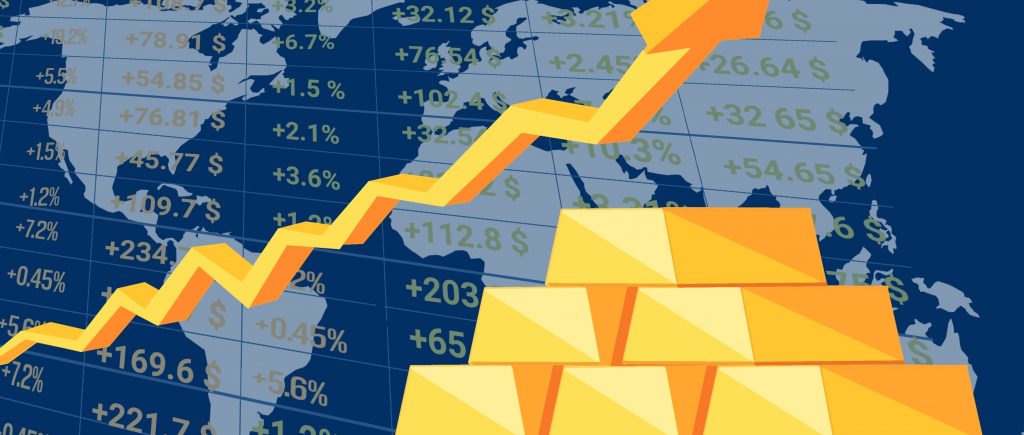Expectations of a rate cut by the Federal Reserve in November and declining US Treasury yields propel gold to a new all-time high. S&P Global Flash PMIs show that while the manufacturing sector is resilient, the US economy is not as strong in the manufacturing sector.
While retaining policy flexibility and acknowledging the mounting uncertainties associated with the labor market, Fed officials voice caution against dramatic rate decreases. Increased demand for gold may result from the growing attraction of safe havens as a result of the tensions between Israel and Hezbollah.
Monday saw a little increase in the price of gold, which reached an all-time high above $2,630 due to growing speculation that the US Federal Reserve (Fed) might cut interest rates in November. With a trade of $2,627, the XAU/USD is up more than 0.20%.
On Monday, US equities saw an upswing in risk appetite. The past two trading days saw record highs for gold traders regardless of a strong US dollar. The Fed speaker’s retreat from aggressively cutting rates appears to be the primary cause of the decline in US Treasury yields, with the 10-year T-note yielding 3.741%.
The United States (US) provided inconsistent data. S&P Global released its Flash PMIs, which showed a dismal picture for manufacturers. In contrast, the services sector held up well even if it slightly declined when compared to August’s statistics.
Meanwhile, despite a softening job market, the Atlanta Fed GDP Now model predicts 2.9% growth in the economy in Q3 2024. The Fed’s regional presidents admitted on Monday that there is now more risk of a contracting labor market. However, they resisted cutting interest rates by 50 basis points, indicating a progressive approach and leaving their options open for future sessions.
This capped the XAU/USD rally, though heightened tensions in the Middle East conflict between Israel and Hezbollah could dampen the risk appetite and increase Gold prices. According to the Associated Press, the US is sending more troops to the Middle East as violence has risen, the Pentagon said Monday.
Gold price holds gains despite Fed commentary
US S&P Global Manufacturing PMI in September deteriorated further from 47.9 in August to 47.0, below forecasts of 48.5. The S&P Global Services PMI expanded by 55.4, above estimates of 55.3 but beneath the previous month’s 55.7, hinting that the US economy is decelerating.
Global physically-backed Gold ETFs witnessed slight net inflows of 3 metric tons last week, according to the World Gold Council. The Fed is still data-dependent, according to Minneapolis Fed President Neel Kashkari, who also declared that the 50 basis point rate drop was “the right decision” and predicted that the fed funds rate will conclude at 4.4% in 2024.
Although he acknowledged that concerns associated with the labor market have increased, Atlanta Fed President Raphael Bostic stated that the half-point reduction “does not lock in a cadence for future rate cuts”. According to Chicago Fed President Austan Goolsbee, additional rate cuts will be required in the upcoming year.
Technical Forecast for XAU/USD:
Gold is ready to pull back before pushing higher. Despite the apparent overstretching of the rally, the XAU/USD shows an upward tendency. The price of gold is still moving in a meager $20 range. The Relative Strength Index (RSI) has been overbought, indicating that although buyers are in control, a decline may be imminent.
If XAU/USD falls below the daily high of $2,600 set on September 18, then expect a leg-down. The 50-day Simple Moving Average (SMA) around $2,481 and the September 18 low of $2,546 will be the next important support levels to test. On the other hand, if XAU/USD breaks above the all-time high (ATH) of $2,634, traders may target the $2,650 and $2,700 levels.

 Noor Trends News, Technical Analysis, Educational Tools and Recommendations
Noor Trends News, Technical Analysis, Educational Tools and Recommendations




